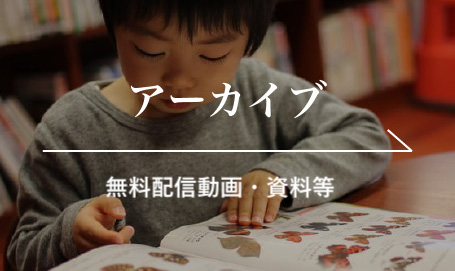< VOLUME 56, No.2>
Michiyo Shimizu A Study of the Practice of the “Playful Learning” Method and the Transition from Kindergarten to Elementary School in the Schools Affiliated to the Tokyo Women’s Normal School:Focusing on the Practical Process of Kindergarten and the First Grade of Elementary School
Research on Early Childhood Care and Education in Japan, 2018, 56(2), 6-17.
This study aims to elucidate characteristics of the practice of kindergarten and the first grade of elementary school among the ‘Taisho’ new education movements focusing on the practice of the “playful learning” method in the schools affiliated to the Tokyo Women’s Normal School. Results showed that both grades had almost the same content and “play and daily life” as learning materials and regarded the interest of the children as the most important. The practice of this school, in which the whole school life was planned such as “education by play”, was treated as an important foundation in the period of the basic learning and the period of the self-education. It was suggested that the transition from kindergarten could change by the innovation of elementary school education.
Key Word: the Tokyo Women’s Normal School, “playful learning” method, the transition from kindergarten tary school, education by play
-------------
< VOLUME 56, No.2 >
Gota Matsui Policy Processes of Full-day Kindergarten in Ontario and British Columbia:Analysis Based on Constructivist Approach of Policy Analysis
Research on Early Childhood Care and Education in Japan, 2018, 56(2), 18-29.
The purpose of this study is to analyze policy the processes of full-day kindergarten in Ontario and British Columbia. The theoretical framework is a constructivist approach of policy analysis. The main finding is that both Ontario and British Columbia have common processes of reaching decisions; that is, policy proposals, making guidelines of early learning, final recommendations of full-day kindergarten and policy decisions. It is suggested that both provinces expand the social trend of full-day kindergarten to ECEC teachers and citizens though this processes. Furthermore, the largest university, the University of Toronto in Ontario and the University of British Columbia in British Columbia deeply influence policy processes in both provinces. In conclusion, these processes in Ontario and British Columbia are involved in making a full-day kindergarten movement across Canada.
Key Word: Canada, full-day kindergarten, early childhood education and care, policy process
-------------
< VOLUME 56, No.2 >
Sumika Miyatsu Developmental Change of Pointing: From ‘One-Self Pointing’ to ‘Communicative Pointing’
Research on Early Childhood Care and Education in Japan, 2018, 56(2), 30-38.
This study focuses on ‘pointing behavior’ appearing at around nine months old, which is a major behavior in the preverbal vocal period. It aimed to observe the pointing behavior of nine children under the age of one (five boys and four girls); ‘one-self pointing’ and ‘communicative pointing’ were observed. In analysis, examinations were car- ried out from three viewpoints: children’s age, physical development and verbal development. The results showed differences in children’s pointing according to their development. The characteristics of children’s production of ‘one-self pointing’ were classified into four categories: aspect, purpose, understanding/naming and others. Up to one-and-a-half years old, results for the purpose category were high; after that, results in the aspect category be- came higher.
Key Word:one-self pointing, communicative pointing, infant development
-------------
< VOLUME 56, No.2 >
Mai Noda and Maki Yamada How to Improve Safety and the Value of Play on indergarten Playground Equipment:A Focus on the Concepts of Hazard and Risk
Research on Early Childhood Care and Education in Japan, 2018, 56(2), 39-50.
This research focuses on aspects of risk management for childcare facilities’ playground equipment. Data is col- lected through participant observations in a kindergarten in Nagoya, Japan, and interviews with newly employed and veteran teachers. The study elucidates how children should interact with equipment in a safe way that also allows the maximum value to be gained from play. It suggests how teachers should best be supported to achieve this aim. It is pointed out how concepts of hazard and risk in relation to playground equipment differs markedly from other countries. The usefulness is considered of classifying hazard into four types, depending on whether it is intrinsic or avoidable, and on the child’s ability to recognize it. Finally, the need for the improving safety manage- ment and expertise among teachers is stressed.
Key Word: risk management in childcare facilities, playground equipment, hazard and risk,e and safety, participant observation & interview survey
-------------
< VOLUME 56, No.2 >
Sayaka Kitada Young Children’s Nurturing Behaviors toward Infants (Babies) in Multi-age Childcare
Research on Early Childhood Care and Education in Japan, 2018, 56(2), 51-62.
This study investigated how young children’s “nurturing behavior” toward infants (babies) emerge in the day- care center where 0- to 5-year-old children interact. Two-five year-olds’ behavior toward infants, peers (young children), and adults were categorized in terms of six categories. Results showed that young children’s behavior toward infants were more frequently categorized as “touching”, “giving”, and “interaction through an adult” than those toward peers or adults. Therefore, those behaviors are considered as “nurturing behavior” as opposed to in- fants that started interactions with infants. It suggests that these behaviors are likely to be caused by young chil- dren’s interests in infants and their desires to interact with and take care of infants.
Key Word:nurturing behavior, care, young childhood, multi-age daycare
-------------
< VOLUME 56, No.2 >
Machiko Tsujitani Normative Consciousness Suggested from Three- to Five-year-old Children’s Verbal Communications:Focusing on Norms without Giving Reasons
Research on Early Childhood Care and Education in Japan, 2018, 56(2), 63-74.
To clarify that young children’s normative consciousness differs from adult values, three-year-old nursery school children were observed continuously until they had finished nursery school. Episodes were analyzed from three perspectives: (1) children’s words showing norms without reasons; (2) children showing norms of words for communication; and (3) teachers helping children communicate with other children. Conclusions: (1) children use norms not only to make playmates obey norms, but also to insist or express negative feelings; (2) norms shown by children can be shared among children even if they did not show reasons; and (3) while the teacher supports children’s communication according to their growth, supporting words can lead children to perceive linguistic norms such as avoiding use of inappropriate words. More research, including analysis of peer-relations and the teacher’s objective, are needed.
Key Word:young children’s perspective, normative consciousness
-------------
< VOLUME 56, No.2>
Haruhi Otobe Development of Musical Expression in Children’s Play
Research on Early Childhood Care and Education in Japan, 2018, 56(2), 75-86.
The purpose of this research is to clarify how children’s expressions through sounds develops in their preschool play. This research is based on a one-year observation of a preschool class for 4-year-olds. It was found that expression through sounds arising from interaction with the environment developed into cultural musical expression by producing sounds through trial-and-error by imitating a pop singer’s concert in make-believe play. It is very important for this development that teachers’ daily supports helps children’s attention to sounds.
Key Word: musical expression, 4-year-olds, interaction with environment, make-believe play of an idol ncert, support of the teacher
-------------
< VOLUME 56, No.2>
Megumi Hayashi, Yumiko Sasaki, Shinichiro Shimeda and Yuichi Toda Narratives on Fluctuations in Identity and Career Development of Childcares Who Have Experienced Migration to Japan as Children:Description by TEM(Trajectory Equifinality Modeling)
Research on Early Childhood Care and Education in Japan, 2018, 56(2), 87-98.
The purpose of this study is to depict the process of the career development of ECEC teachers who have experienced migration to Japan as children. Applying Trajectory Equifinality Modeling, narratives of three teachers (ethnic Japanese immigrants from South American countries) were visualized to present their process of career development including their fluctuations in identity. The visualization depicted their thoughts on roles affected by their own abilities “to speak their own native language” and “of empathetic understanding of immigrant children who have similar backgrounds”; and their confidence level in languages might have influenced their career development. Also, the expectation for immigrant ECEC teachers to be good translators has brought too much of a burden on them. Therefore, understanding such difficulties related to their career development may help the immigrant ECEC teachers.
Key Word: teachers of ECEC, ethnic Japanese immigrants, career development, narratives, TEM (Trajectory nality Modeling)
-------------
< VOLUME 56, No.2>
Mari Kashiwa and Kazuyuki Sato Possibility of Childcare Facilities in Childcare Social Support:Identifying the Concerns of Parents with Kindergarteners
Research on Early Childhood Care and Education in Japan, 2018, 56(2), 99-110.
The objective of this research was clarifying the role of childcare facilities in connecting families with society. First, using “a scale to measure support based on childcare facilities”, which Kashiwa, Iwasa and Sato developed (2017), we focused on three factors affecting child-rearing: 1. emotions related to child-rearing; 2. parent- child relationships and 3. marital relationships. Secondly, by focusing on parents whose children go to childcare facilities, especially kindergartens, characteristics of support needs for parents are clarified.
Based on this study, we concluded that social support could improve the emotional states of parents with kindergarteners and helped families maintain good relationships. In order to support child-rearing for society as a whole, it is required that childcare facilities convey the importance of a marital relationships in child-rearing and seek support that mediates family relationships.
Key Word:child-rearing support, childcare facilities, childcare social support
-------------
< VOLUME 56, No.2>
Yoko Ueda A Study on Support for Users’ Processes of Emotional Chang at Regional Childcare Support Center:An Analysis of Support by Using the Trajectory Equifinality Model (TEM)
Research on Early Childhood Care and Education in Japan, 2018, 56(2), 111-119.
The purpose of this study is to analyze emotional changes of users of Regional Childcare Support Center (RCSC) and to clarify what kind of support can be given to prevent parent isolation during child care. I interviewed five users who frequently visited the RCSC and analyzed the data by the Trajectory Equifinality Model (TEM). As a result, the data was classified into 4 processes for parents’ emotional changes based on complex emotions. In this study, it became clear that users were very sensitive to the words and involvement of others. Since the tension and anxiety of users are hard to see on the surface, it is suggested that ‘grasping’, ‘approach’, ‘ingenuity’ and ‘bridging’ are necessary for the support of parents at RCSC.
Key Word:emotional change, Regional Childcare Support Center, Trajectory Equifinality
Model (TEM), rd, user
-------------









